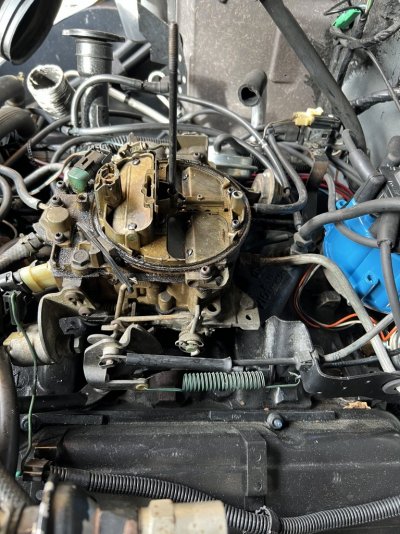jimmy78
Full Access Member
- Joined
- Jan 21, 2024
- Posts
- 51
- Reaction score
- 35
- Location
- bc
- First Name
- matt
- Truck Year
- 1978
- Truck Model
- jimmy
- Engine Size
- 5.7l
Looking at the carb on my 350 5.7l I have almost all the vacuum ports plugged off.
The only ones connected are PCV valve to large port on front of carb. And turbo 400 to intake manifold. Hei distributor to small port on front carb.
There is a vacuum actuator pot on the side of the carb that is capped off that seems like it should be plugged into something.
I will post pictures soon and hopefully the wise people on here can help me straighten it out.
The only ones connected are PCV valve to large port on front of carb. And turbo 400 to intake manifold. Hei distributor to small port on front carb.
There is a vacuum actuator pot on the side of the carb that is capped off that seems like it should be plugged into something.
I will post pictures soon and hopefully the wise people on here can help me straighten it out.


